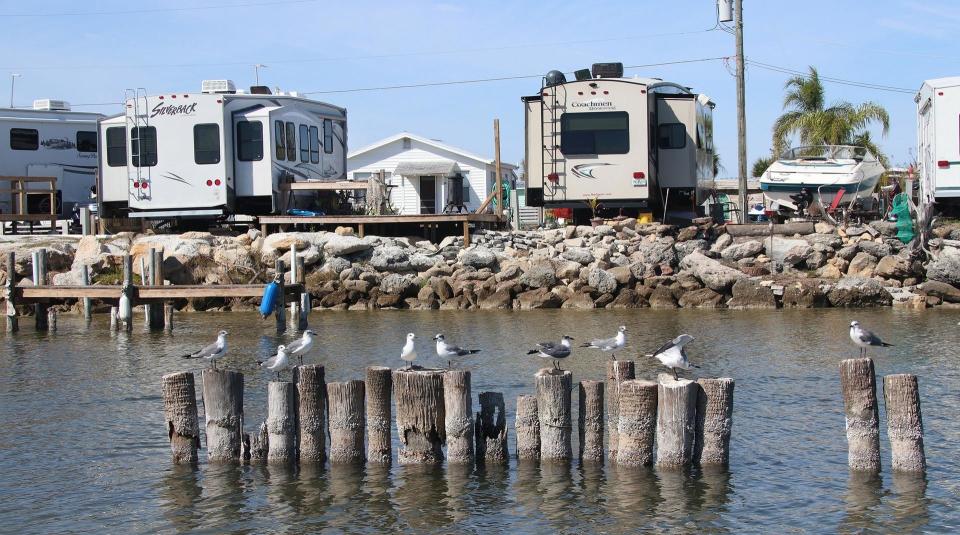Cleaning up the Indian River Lagoon: Oak Hill breaks ground on $9M septic-to-sewer project
OAK HILL — Officials broke ground this week on a $9 million project to transition a neighborhood on the northern Indian River Lagoon from septic tanks to a more environmentally friendly centralized sewer system.
Oak Hill Mayor Douglas Gibson told The News-Journal the project will improve water quality in the imperiled Indian River Lagoon, hopefully preserving it for his grandkids and their children.
"My feeling is we have to start now," he said. "If we don’t clean up the lagoon and quit polluting, they will not be able to enjoy the waterways and springs in the state of Florida."
A ceremony was held Wednesday morning to commemorate the start of the project in Oak Hill, which will connect 285 households to a county-operated sewage collection system running through Indian Harbor Estates.

The homes are surrounded by a network of canals.
"The nitrates and phosphates have no place to go except into the canals, which empty into the lagoon," Gibson said. "Stormwater runoff, overfertilization, all of that plays a part. But if Oak Hill can remove the nitrates and phosphates created by the septic systems, to me we’ve done our part."
Research by Brian Lapointe, a Harbor Branch Oceanographic Institute scientist, shows that septic tanks are one of the primary sources of pollution in the Indian River Lagoon.
Declining water quality has fueled harmful algal blooms and choked out seagrasses, leading to a devastating Florida manatee die-off — a record-shattering 1,101 deaths in 2021 — as the creatures starve.
A starvation crisis: For Florida manatees, it will be another long winter, though Blue Spring remains a haven
How to save a species: 9 critically endangered North Atlantic right whale calves were spotted in first month of season
Trying something new: Can this seagrass restoration method work even before Indian River Lagoon gets clean?
This is the first of five phases of septic-to-sewer conversions in Oak Hill, where Gibson said 80% of the city's 2,000 residents were on septic.
Much of the approximately $9 million for this phase came from the state, including $4.8 million from the Florida Department of Environmental Protection. The St. Johns River Water Management District kicked in $2.5 million and additional money came from the city, Volusia County and the Indian River Lagoon Council.
It's been in the works for nearly six years — "too many," as Gibson put it.
"I was told at first, 'Never going to happen,'" former Volusia County Councilwoman Deb Denys recalled. "We realized the only way to accomplish this was to break the geographic area into five phases."
Denys praised Gibson's vision and his skill at roping in all the folks needed to make this work.
"Ten years ago nobody wanted to talk about water quality. Septic-to-sewer conversion was not on the radar," she recalled. "Then everybody started waking up and saying we’ve got to address this."
Gibson said when he switched from an aerobic septic tank to sewer a few years ago, his annual costs actually went down. He said he and his wife pay about $65 or $70 a month for water and sewer in Oak Hill.
Residents will have to pay about $1,000 to condemn their septic tank and hook in, he said.
Residents will have a year to connect, though those with high-functioning septic systems can seek out a permit for an exception.
Construction will take 15 months.
This article originally appeared on The Daytona Beach News-Journal: Indian River Lagoon: Florida DEP helps fund Oak Hill septic-to-sewer

